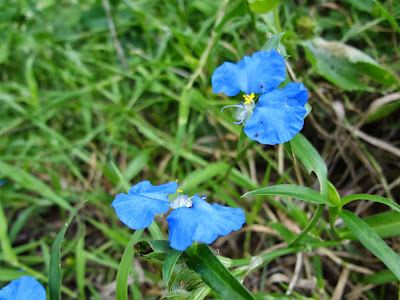When it comes to woodcraft any notion that meat knives are
outdated is ill conceived. While most
“bushcrafters” indulge in the activity as a hobby there are tens of thousands
of rural folks who use “meat knives” on a daily basis. I’m not talking about carving out a roast on
the kitchen table or slicing sausage into segments. Instead, I’m referring to butchering hogs, goats
and deer or processing a chicken that spent the previous night in a tree behind
the house. Nor is this about gutting an
animal then shipping it off to the butcher shop. I’m focusing here on those who take the
animal from “on the hoof” to “in the freezer” or “across the drying rack” with
nothing more than a cleaver and a knife.
Gutting, skinning, quartering, deboning; the meat knife is as much an
essential part of one’s kit as it was in centuries past.
I understand that most urban folks are light years away from
this concept. To them bushcraft
(woodcraft) is not much more than a weekend trip into the forest where they
recreate or perhaps reenact something that to them correlates to getting back to nature and gives them
the opportunity to practice things like making feather sticks or bow-drills or
maybe building a wickiup. I applaud
those efforts and am heartened to hear that people want to be close to nature
and believe in preserving the land. Too
many other self-indulgent types think nothing of tearing up the ground,
knocking down the forests, laying pavement through the wilderness and fracking
the heck out of our precious underground water supplies. But let’s not dismiss the meat-knife as
outdated just because some of us don’t fully understand its intrinsic value or
realize that there are many people who still live close to the land. Jim Bridger and Jeremiah Johnson may have
been great woodsmen but there are people today who are just as knowledgeable and
depend on well-made meat knives as much as their forefathers did in the way
back long ago.
Trade knives, butcher knives and skinning knives tended to be
thin bladed and perhaps a bit larger than today’s popular “bushcraft”
knife. And here’s a key bit of
information: They were never used to
chop wood or make feather sticks or cut out tent pegs…at least not if the owner
could avoid it. A meat knife’s primary
purpose is to prepare food and not make a camp.
If one needed to make a camp then the ax or machete was the optimal
tool, and for detailed work on tent pegs, pot holders, deadfall traps and snare
triggers or for anything that required finesse the jackknife—especially if
multi-bladed—saw service. In other
words, the “bushcraft” knife seems to be more of a recent innovation designed
around today’s gentleman bush-crafter. Now
in some parts of the world the dedicated bushcraft knife might solve various
logistical problems but those areas seem confined to extreme northern latitudes
where wood is soft and not prone to obliterate bevel edges. In other places hardwood is aptly named and takes a lot more than a knife to
properly cut, slice and otherwise cleave.
A couple of old meat knives have seen a lot of use.
The other important thing about meat knives is that they
should be capable of maintaining a sharp edge.
There’s nothing more exasperating than working with a knife that goes
dull after a few cuts and slices. That’s
one reason I’m no great fan of stainless steel.
It either dulls quickly or if one of the modern space age types then
once it does go sour it takes a while to re-sharpen. High carbon steel knives on the other hand made
of 1095, 1080, L6 or O1 are not only easy to sharpen but also keep their edges
longer—if the knife maker did a good job of heat treating and tempering. Their only downside is they rust and
stain. And that, of course, means you’ve
got a choice assuming you don’t live next to saltwater. You can take a few minutes to keep your knife
clean with a swipe of oil ranging from olive oil to some petroleum based
product or you can watch your trusted blade corrode into powder. It might not, however, be a good idea to get petroleum
on the knife you plan to use to butcher your next deer. I usually clean my carbon steel knives and
then dry them thoroughly with a cloth. They
will stain but not rust.
Here’s my suggestion: Carry a good quality meat knife like
the ones pictured above. In your pocket
carry a couple of jackknives. I prefer a
carbon steel “trapper style” or at least that’s what I prefer these days. The pocketknife is your detail woodworking
tool in case you need to make a pot holder or maybe whittle out a skewer. And bring along a camp ax or a well-built
machete for light chopping in the case of the ax or clearing away underbrush with
the machete. Now I understand that many
of you will never butcher an animal nor will you use your knife for meat
processing of any type. Your personal
knife is for making feather sticks and goofing around with bow drills and for
batoning a chunk of wood because that’s what Captain Survivor does on his new
hit TV show “Alone in the Wilds!” You
will pack in your food and hopefully you will carry out your refuse. And that’s the right thing to do in your
case. But please don’t believe the skinning
knife is outdated. Lots of folks in
isolated places would suggest that’s just not the case.



























